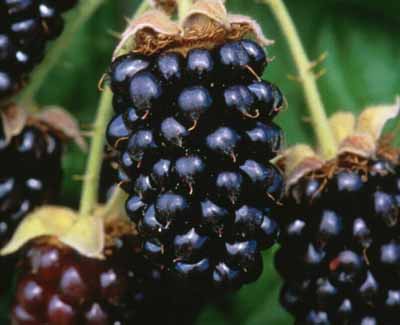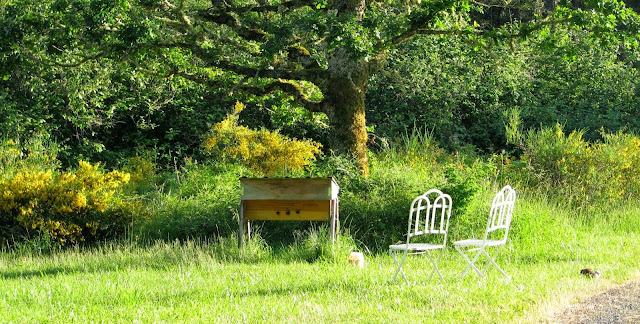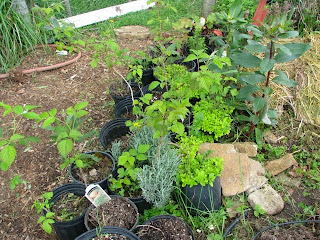Fall through early Winter is a great time to divide and transplant perennials and berries and this is why;
If you plant in the spring you will have to wait for the soil to be dry
enough to work. If you dig when the soil is wet you will destroy the soil
structure, especially if you have clay soil. Planting in the Spring means waiting for the weather to improve and forces your berry starts to lose a good month of time to get established. Also, by that time the plants are already growing tender shoots and root hairs which will be bruised and broken by the time they are dug up, potted, transplanted or otherwise handled. Setting them back even further.
Because of this, I find berries are easiest to divide and transplant when they are about to sleep for the winter. They have fewer tender leaves and larger root balls and if I divide and plant a month or two before the hard freeze, they can get their roots settled in and they are much less traumatized than they would be in the spring. Of course there will be no real visible growth but as soon as the barely warm, early spring hits they will burst into action, making more roots and then top growth. They will start growing the very second that the weather allows.
And the best part about planting in the Fall is that you don't have to worry about keeping them watered. Nature does all the work. Unless, of course, you live in a very low rainfall area, then you will need to keep the transplants well watered until they get a root mass large enough to sustain the plants.
Raspberries are pretty easy to propagate and transplant since they spread by fairly shallow, long roots that travel under ground and sprout several new plants called "suckers". You can divide clumps of Raspberries but it is much easier to just dig up suckers.
Heed my warning in my post about planting raspberries in a garden or flower bed where you have other things planted. When it comes to Turf Wars, Raspberries will win.
Raspberries took over my Blueberries a couple of summers ago. I have dug
them all out of the area since then and put the babies into pots and
gave them to friends.
If you have baby raspberries taking over an area, this is a great time get all those suckers dug up and to move them to a better spot. What is a better spot? In all my years of growing raspberries the one bed that has been the very best behaved was one that was planted in the corner of the lawn and was isolated by the regular mowing of the grass that surrounded the bed.
Marion Berries are hands down the number one favorite berry in our family and it is for one single reason.

It makes the best jam you have ever tasted. Buck makes batches of jam every year and, unlike other jams, we never have any to give away. We eat it all.
Marion berries are a large, juicy and tangy sweet variety of Blackberry that was developed in the 50's here in Oregon. It's flavor is far superior to any other blackberry I have ever tasted. The vines have some nasty thorns so you don't want to plant them by a walkway or play area.
The vines are easy to control though, unlike the raspberry because they propagate by "Tip Rooting." The very tip of each vine will grow roots and become a plant. If you keep the tips from touching the ground, Marion Berries will pretty much stay where you put them. To keep them from touching the ground, the long canes are rolled into loops and fastened to a wire stretched between posts.
When the plant is firmly rooted, just snip the old vine near the new plant and either plant the new plant or keep it in the pot, but be sure to put the pot where it will get watered until you figure out where you want it.
Strawberries are also easy since they send out long "Stolons", fleshy horizontal stems which sprout baby strawberry plants at each node along the way.
Strawberries hate being planted too deep in the soil. They like to sit on top of well drained soil with their crowns high in the air. So it is much easier to keep them alive if you direct the runners to where you would like the new plants and pin the Runner down with a rock or garden staple. Once the babies get a real root ball, at the end of the summer or the next spring, you can cut the runner and leave the babies where they are or dig them up to move them elsewhere.
If you move them, take care to plant them the same depth they were growing at, and be careful to account for fluffed up soil which will sink down after a few waterings. If the roots are exposed after watering add a little compost to cover just the roots, not the crown. Then mulch well to protect their shallow roots. They're called "Strawberries " for a reason after all!























